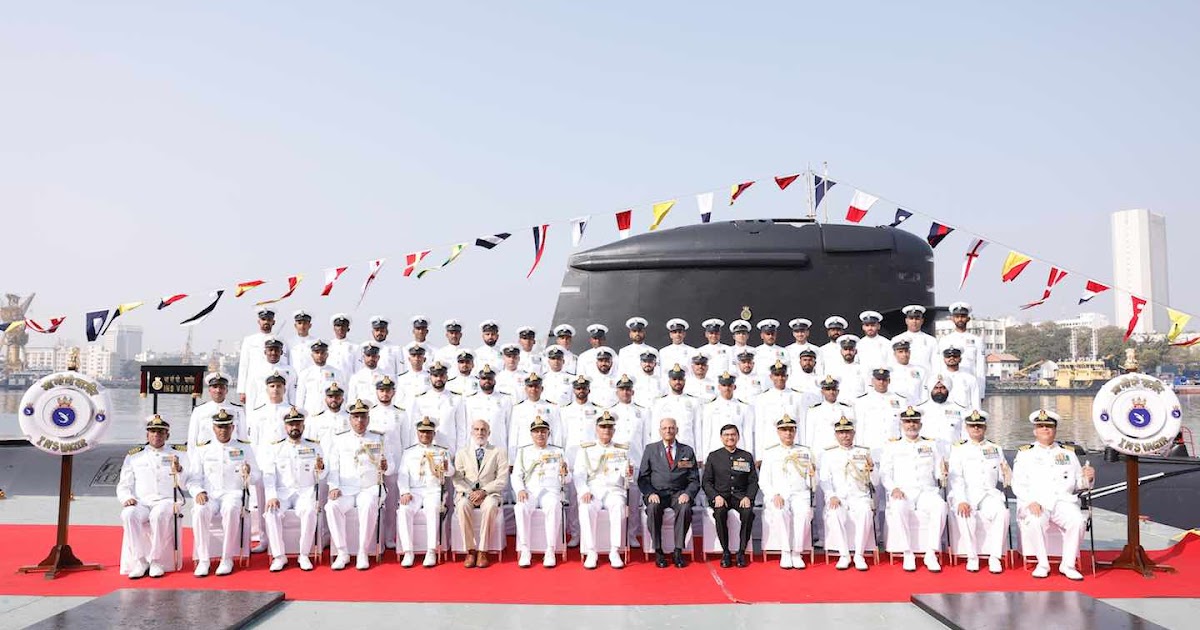
With no foreign submarine acquisitions in sight, the Indian Navy will upgrade the existing Scorpene fleet with DRDO’s air-independent propulsion
By Vikas Gupta
Defence News of India, 24 January 2023
As INS Vagir, the fifth Scorpene (Scorpion in French) submarine built by Mazagon Docks Limited (MDL), Mumbai, was commissioned into the Indian Navy on Monday, the Ministry of Defense (MoD) announced that the Air Independent Propulsion (AIP) being developed by the Defense R&D Organization (DRDO) would be retro-integrated into the fleet of six Scorpènes.
“In a major boost to ‘Aatmanirbhar Bharat’, DRDO’s Naval Materials Research Laboratory (NMRL) fuel cell-based AIP system will soon be installed aboard INS Kalvari (the first of six Scorpene submarines built by MDL,” a Defense Ministry press release said.
Senior officials from NMRL and Naval Group (France) signed an agreement in Mumbai to cooperate on the detailed design phase of the integration of the DRDO AIP into the six Kalvari-class submarines. It is agreed that Naval Group France must certify the indigenous AIP design for integration into submarines, the Ministry of Defense said.
An AIP multiplies the lethality of a diesel-electric submarine by multiplying its endurance to operate submerged. Conventional diesel-electric submarines, such as those operated by the Indian Navy, must surface to recharge their batteries after around 48 hours of operation. However, a submarine with AIP can operate submerged for up to 14 days.
The AIP developed by the NMRL is called “Fuel cell based AIP” and is unique in that it generates its need for hydrogen on board.
“This technology has been successfully developed by NMRL with the support of Indian industrial partners. The technology has now reached the mature stage for industrialization,” the Ministry of Defense said.
The ground prototype of the NMRL AIP has been successfully tested. According to the Ministry of Defence, the next step will be “Energy Module Detail Design Certification”, which the NMRL will do with Indian industry partners.
Naval Group has pledged to oversee the integration of the indigenous AIP inside the Scorpene, leading to “the localization and industrialization of the AIP, including the manufacture of the hull by Indian industry for a future assembly on board submarines”, announced the Ministry of Defense.
Naval Group boss Pierre Eric Pommellet said it was “a natural extension of the bilateral strategic cooperation between India and France in the field of underwater defense and deterrence”. .
Project 75 is the MoD’s code name for the construction of six Scorpene submarines in MDL with technology provided by French shipbuilders, Naval Group (formerly Armaris, then DCNS. Project 75 delivered its first submarine , INS Kalvari, in December 2017.
This was followed by four more boats (as the navy refers to submarines), called the Kalvari class after the lead ship. These include INS Khanderi (commissioned in September 2019), INS Karanj (March 2021), INS Vela (November 2021) and INS Vagir (January 2021).
The sixth and final Project 75 submarine, INS Vagsheer, is currently completing its sea trials for delivery in 2024, the MoD said.
This will increase the number of Indian Navy submarines to 17. These include seven Kilo-class submarines of Russian origin, four of German origin, HDW Type 209 submarines and six Scorpènes. There is also an Akula class, nuclear powered boat, taken from Russia on charter.
According to the MoD’s 30-year submarine construction program, Project 75 was to be followed by Project 75-India, which involved the construction of six more AIP-powered submarines in India, with technology supplied by a builder world naval chosen.
Project 75-India was to be followed by an indigenous project to build 12 more conventional AIP-powered submarines.
Now, however, with the DRDO AIP heading towards operational viability, Project 75-India will involve the DRDO AIP, not an outsider.
Alongside the construction of these 24 conventional submarines, the DRDO is developing a range of six nuclear-powered and conventionally armed attack submarines (SSN).
Speaking at the commissioning of INS Vagir, Naval Group’s Laurent Espinasse said Project 75 highlights the success of India’s program to build indigenous submarines. “This submarine was entirely built by MDL after successfully absorbing technology transfer from Naval Group, in line with the ‘Make in India’ policy,” he said.
The construction of six Scorpene submarines has promoted the promotion of highly qualified micro, small and medium-sized enterprises (MSMEs). “MDL and Naval Group have developed a rich industrial ecosystem of over 50 Indian companies, as well as an Indian subsidiary with over 70 Indian engineers to support the Indian Navy, contributing to industrial and technological sovereignty,” Naval Group said. .
The Scorpene is a 2,000-ton conventionally powered, stealthy, high-performance submarine that Naval Group has optimized for anti-surface ship warfare, anti-submarine warfare, long-range strikes, special operations and intelligence gathering.
Stealthy and fast, its high level of automation allows it to be operated by a limited number of crew, which considerably reduces its operating costs. Its combat edge is provided by six weapon launch tubes and 18 weapons, including torpedoes and missiles.
When the Vagsheer is delivered, there will be 14 Scorpene submarines in service with four navies: two in Chile and Malaysia, four in Brazil and six in India. In addition to these, potential buyers include the Philippines, Indonesia, and Romania.






